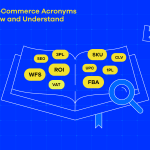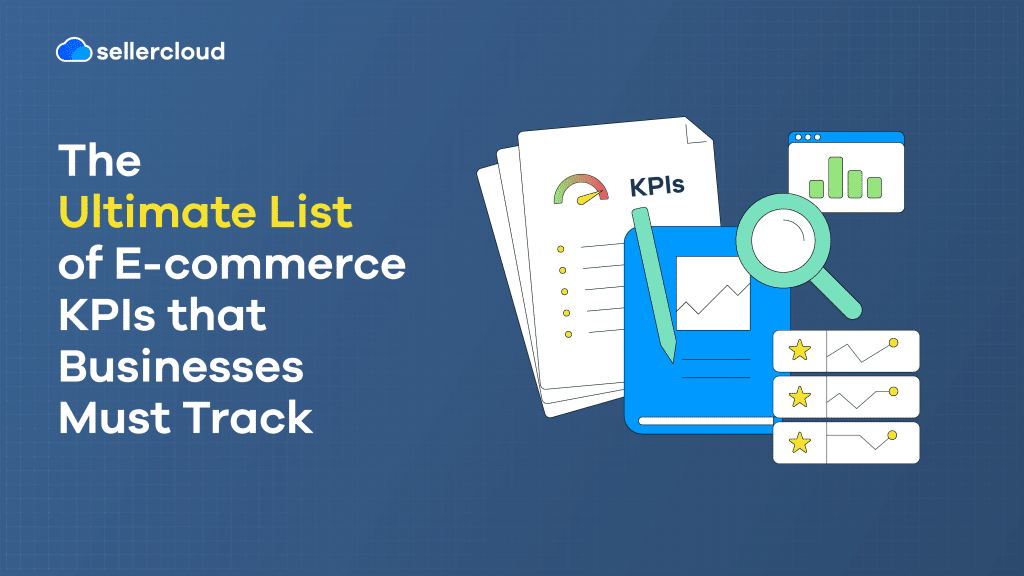
- Ecommerce KPIs help businesses measure the performance of their operations, whether they involve order fulfillment, customer service, or inventory management.
- Descartes Sellercloud’s reporting features can help keep merchants on top of the most critical KPIs for their business.
How are you measuring the success of your ecommerce business? If you’re not measuring performance, how do you know if your business is doing as well as it could be? That’s where KPIs come into play.
KPI stands for ‘Key Performance Indicators.’ KPIs measure the performance and progress of many things, such as an organization, a business unit, and projects. KPIs are by no means perfect. Sometimes, focusing too much on KPIs can distract businesses from the real issues. Nevertheless, KPIs help businesses gauge their performance.
In this article, we’ll look at a range of KPIs used in different areas of ecommerce and how tracking them can benefit your business.
What are Ecommerce KPIs?
Ecommerce KPIs are exactly what you’d think they are—a variety of ways to measure the performance of your ecommerce business. They can be divided into different categories depending on the area of ecommerce—for example, order fulfillment, customer satisfaction, and inventory management, which we will examine.
How are Ecommerce KPIs Useful?
Ecommerce KPIs are useful because they can track how your business is doing in different areas of your operations. Focusing on KPIs can help your business remain competitive by maintaining a certain level of performance or striving to outperform rivals. They help identify problems and opportunities and strategize how to approach them. Like with many areas of ecommerce, it’s all about striving for efficiency.
KPIs can also help reduce the costs of your operations by helping you identify costly inefficiencies. On top of that, KPIs can become acceptable performance, such as the expected time it should take for a task to be completed. If a KPI dips below this level of performance, you can investigate why.
To be useful, though, KPIs should be realistic and based on achievable goals. This often requires some historical data on past performance. Furthermore, you must decide on an appropriate way to measure KPIs and which ones are most important to focus on.
You also must be open to investigating abnormalities that can impact KPIs. For example, just because a task took longer than expected doesn’t mean it is the fault of anyone or any process. Sometimes, the unexpected happens, and it drastically affects performance.
Ecommerce KPIs by Category
Let’s break down the most useful ecommerce KPIs by which part of ecommerce they relate to. Remember that ecommerce businesses can measure their successes and failures in many different ways, and that not all KPIs will be useful to you.
Companies can, of course, set their KPIs or take well-known KPIs and change them so they work for their company. Furthermore, not all KPIs are quantitative and can be measured numerically. Qualitative KPIs are more subjective and often rely on opinions.
Our list of KPIs is pretty extensive (87 in total), and actively monitoring them all is enough to make anyone’s head spin. Again, this is why monitoring only the KPIs that matter for your business is important.
Top 35 Order Fulfillment KPIs
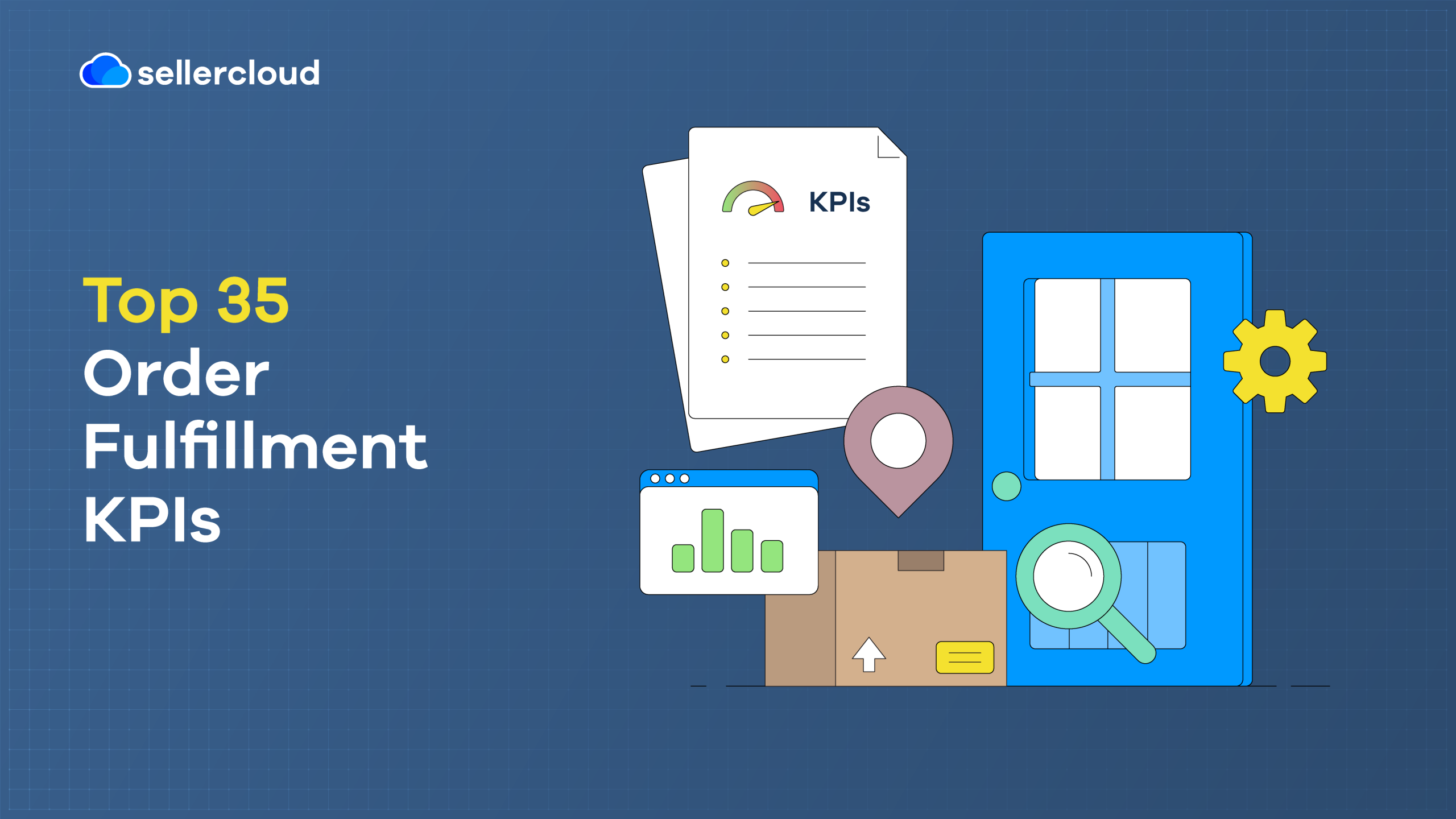
Order fulfillment KPIs are all about measuring how quickly and efficiently your company is handling orders. Here are 20 of the most useful.
- Fulfillment Accuracy Rate—The number of orders shipped to the right customer on time in the right condition.
- Order Cycle Time—The average time it takes for an order to be shipped out to the customer from when it was placed, excluding delivery time. It can also be referred to as ‘Internal Order Cycle Time.’
- Order Lead Time—The average time it takes for an order to be processed and shipped after it is placed. It can also be called ‘Total Order Cycle Time.’
- Order Packing Time—The average time it takes to pack an order for shipment.
- Order Accuracy—The percentage of orders shipped correctly and without errors or missing items.
- Order Shipment Accuracy—The percentage of orders shipped to the correct address without any delivery errors.
- Order Fill Rate—The percentage of customer orders that can be completely fulfilled without backorders or stockouts.
- Orders Picked Per Hour—Measures the total number of items picked per person per hour.
- Valid Tracking Rate (VTR)—The percentage of confirmed orders shipped by the carrier.
- Order Backlog—The number of orders pending fulfillment at any given time.
- Order Picking Accuracy—The percentage of items picked accurately in an order without errors or substitutions.
- Error Rate—The percentage of errors during the fulfillment process. This could include incorrect items shipped, incorrect quantities, wrong addresses, or other fulfillment-related errors.
- Order Documentation Accuracy Rate—The percentage of orders that included the correct documentation.
- On-time Ready to Ship—The percentage of orders ready to be shipped on time.
- On-time Delivery Rate—The percentage of orders delivered to customers within the promised or expected timeframe. It can also be called ‘On-time Shipping Percentage.’
- Order Delivery Cost—The average cost incurred for delivering each order, including shipping fees, packaging costs, and any additional expenses.
- Order Shipping Time—The average time it takes for an order to be delivered to the customer after it has been shipped.
- Lines Picked and Shipped Per Hour—How long it takes to pick and ship a line per person per hour.
- Order Cancellation Rate—The percentage of orders canceled related to the total number of orders. Cancellations can be either by the customer or due to inventory or operational issues.
- Order Fulfillment Cost—The average cost to fulfill each order, including storage, picking, packing, and shipping expenses.
- Average Order Value (AOV)—The average monetary value of each order. It can indicate the effectiveness of cross-selling or upselling efforts.
- Average Cost Per Order—The annual combined cost of receiving, storing, picking, and packing divided by the number of orders received.
- Distribution of costs (percentage of sales)—The combined cost of warehouse and fulfillment expenses divided by the total number of sales.
- Distribution of costs (per unit shipped)—Similar to the above, this KPI measures total distribution cost compared to the total number of units shipped.
- Order Volume—The total number of orders processed within a specific timeframe.
- Order Aging—The average time an order remains in the system before it is fulfilled, highlighting any delays or inefficiencies in the fulfillment process.
- Percentage of Orders Received Damage Free—The percentage of undamaged customer orders.
- Warehouse Turnaround Time—The time it takes for products to move through the warehouse, including receiving, stocking, picking, and packing.
- Inbound Orders Received—The number of receiving orders processed divided by the number of hours worked by employees handling receiving operations.
- Order Fill Time—The average time it takes to pick, pack, and prepare an order for shipment once received.
- Part-time Workforce to Total Workforce—Compares the number of part-time and full-time workers.
- Cross-trained Rate—This KPI compares the number of workers trained in more than one area to the total number of employees.
- Perfect Order Percentage—Used to calculate how effective your company is at promptly taking orders with accurate product information.
- Annual Recurring Revenue (ARR)—Expected annual revenue based on subscriptions. Similarly, Monthly Recurring Revenue (MRR) is the predicted monthly revenue based on subscriptions.
- Gross Merchandise Value (GMV)—The gross value of merchandise sold over a timeframe.
Top 20 Customer Service and Satisfaction KPIs
To grow your business, you must keep your customers happy and coming back for more. Potential customers will be more skeptical of merchants with poor customer service.

- Customer Satisfaction Score (CSAT)—Measures overall customer satisfaction with the shopping experience and order fulfillment process.
- Customer Effort Score (CES)—Assesses the ease and convenience of the customer’s experience while interacting with the ecommerce platform.
- Net Promoter Score (NPS)—A measure of customer loyalty and likelihood to recommend the ecommerce business to others.
- Customer Retention Rate—The percentage of customers who make repeat purchases from a business over a specific period.
- Customer Lifetime Value (CLV)—The projected revenue a customer is expected to generate over their entire relationship with a business.
- Customer Churn Rate—The percentage of customers who stop making purchases or discontinue their relationship with the ecommerce business over a specific period.
- Average Response Time—The average time taken by customer support to respond to customers’ inquiries. Also known as ‘Average Reply Time.’
- First Contact Resolution (FCR)—The percentage of customer requests resolved during the initial interaction without the need for follow-ups.
- Order Delivery Time Accuracy—The percentage of orders delivered to customers within the promised or expected timeframe.
- Customer Reviews and Ratings—The average rating and feedback customers provided on products, services, and the overall shopping experience.
- Return Rate—The percentage of orders returned by customers. Often an indication of customer dissatisfaction or product issues.
- Return/Refund Process Efficiency—The ease and efficiency of the return and refund process, including response time, refund processing time, and customer satisfaction with the resolution.
- Customer Complaints—The number and nature of customer complaints received. It can indicate areas for improvement and potential issues in the customer experience.
- Customer Engagement—This can be measured in various ways, such as social media engagement and email open rates. It’s all about measuring customer interactions.
- Average Handle Time (AHT)—The average time customer service representatives spend on ‘handling’ a ticket.
- Cost Per Resolution—A calculation of how much it costs to resolve each customer service issue. It can give a business an idea of its operational costs.
- Support Costs vs. Revenue—Similar to ‘cost per resolution.’ You compare the total support costs to the revenue your company is bringing in.
- Escalation Rate—The percentage of issues escalated to more experienced customer service representatives.
- Abandonment Rate—The number of callers that give up before getting through to a customer service agent.
- Number of Tickets by Channel—The number of issues raised to customer services according to channel or medium. For example, phone, email, or chatbot.
Top 27 Inventory Management KPIs
If you don’t keep your inventory in order, you can face many problems. Here are the top inventory management KPIs you should be aware of.
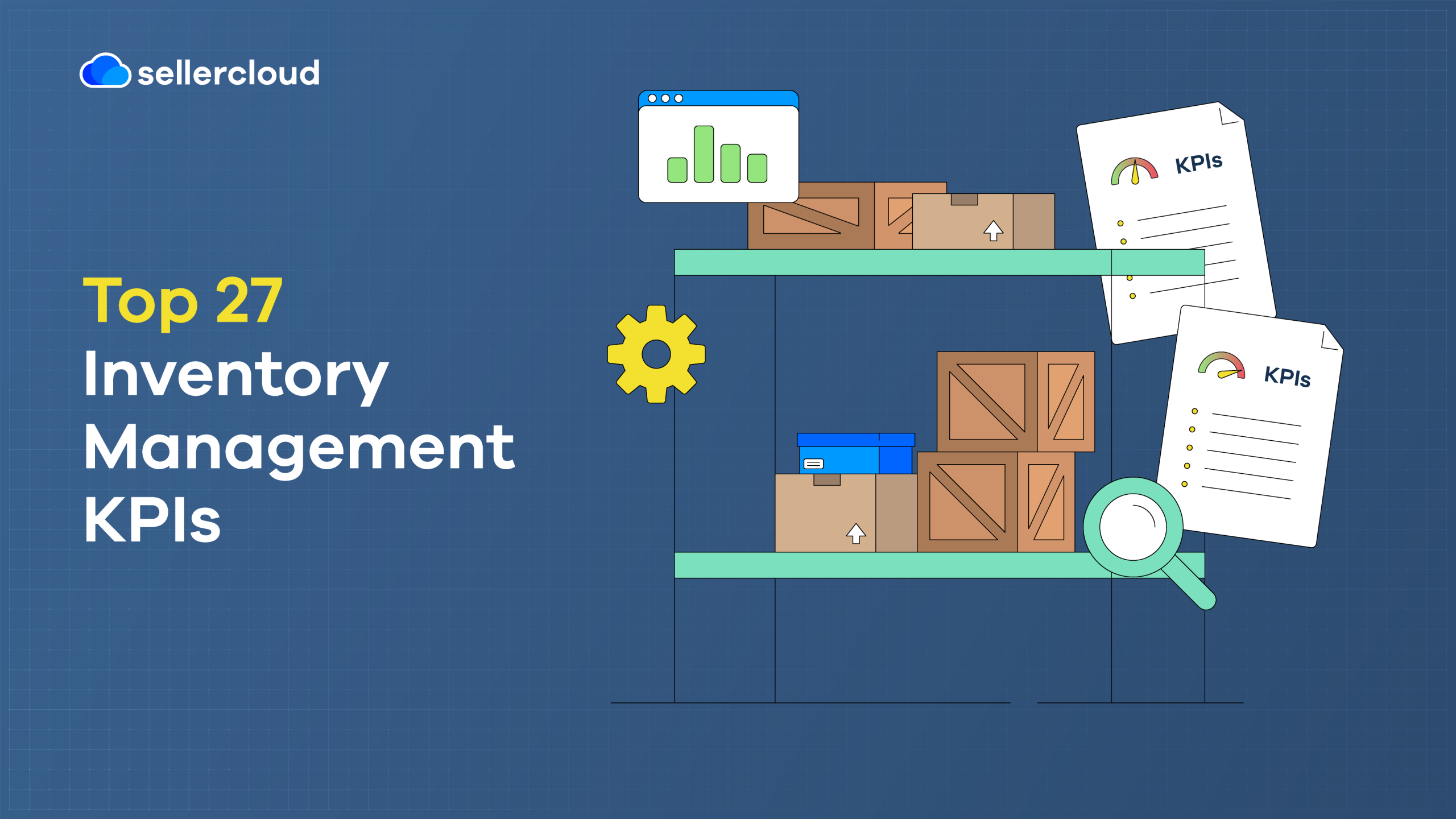
- Inventory Accuracy—To calculate this KPI, you compare the total number of items that match their record information with the total number of items checked.
- Inventory Turnover—The rate at which inventory is sold.
- Inventory Turnover Ratio—The number of times inventory is sold and replaced within a specific period. It can indicate the efficiency of inventory management.
- Stockout Rate—The percentage of times a product is out of stock and unavailable for purchase when a customer wants to buy it.
- Average Warehouse Capacity Used—The percentage of warehouse space currently occupied. It can be measured at certain intervals, such as monthly or annually.
- Peak Warehouse Capacity Used—The percentage of warehouse space occupied during peak seasons.
- Carrying Cost of Inventory—The costs of holding and managing inventory, including warehousing, storage, insurance, and depreciation.
- Gross Margin Return on Inventory Investment (GMROI)—A measure of how efficiently inventory generates gross margin relative to its investment.
- Stock Accuracy—The percentage of inventory records accurately reflecting the physical inventory count.
- Lines Received and Put Away—The total lines received divided by the total hours needed to store them correctly.
- Fill Rate—The percentage of customer orders that can be completely fulfilled without stockouts or backorders.
- Dock to Stock Cycle Time—The time it takes for incoming stock to be put away and recorded.
- Lead Time Variability—The degree of variation or inconsistency in the time it takes to replenish inventory after placing an order.
- Obsolete Inventory—Inventory that is no longer saleable or has exceeded its shelf life. (Products become obsolete when technologically defunct or no longer fashionable.)
- Stock Aging—The average age of inventory items in stock, indicating the freshness and potential obsolescence of products.
- Inventory Days of Supply (IDS)—Measures the average number of days inventory is held before sold. Usually calculated annually.
- Stock-to-Sales Ratio—The ratio of available inventory to sales during a specific period. It helps to identify excess inventory or potential stockouts.
- Stock Accuracy Cycle Count—The frequency and accuracy of periodic inventory counts to verify stock levels and reconcile discrepancies.
- Inventory Holding Period—The average number of days inventory is held before it is sold or used.
- Stock Rotation Rate—The rate at which inventory is sold or consumed within a specific period. It provides insights into demand and popularity.
- Lost Sales—The revenue or percentage of potential sales lost due to stockouts or unavailability of products.
- Stock Replenishment Time—The average time it takes to replenish inventory once it reaches a predetermined reorder point.
- SKU Performance—Analysis of individual SKU performance, including sales, profitability, and inventory turnover. This can be useful when determining how much stock you need.
- Shrinkage Rate—The percentage of inventory loss or shrinkage due to theft, damage, or administrative errors.
- Supplier Performance—Evaluating supplier performance based on on-time delivery, order accuracy, and lead time adherence metrics.
- Sell-Through Rate—The percentage of total inventory items sold within a specific period, typically monthly or seasonal.
- Inventory Count Accuracy by Location—The percentage of inventory that can be accurately located in its correct physical location according to warehouse management software.
Looking to learn more about inventory management? Then check out our inventory management guide.
Bonus: Top 5 User Experience (UX) KPIs for Ecommerce
If you’re running an ecommerce business through your website, user experience KPIs can provide insights into the overall user experience on the ecommerce platform.
- Bounce Rate—The percentage of users who immediately leave after landing on your website.
- Page Views—The total number of pages a user views in one session. Sometimes written as ‘pageviews.’
- Time on Site—The amount of time a user spends on a site in one session.
- Conversion Rate—The number of users who complete a ‘desired action’ on your site, like purchasing.
- Cart Abandonment Rate—The rate at which users leave a site without paying for the products in their shopping cart.
How Descartes Sellercloud Can Help Monitor Ecommerce KPIs
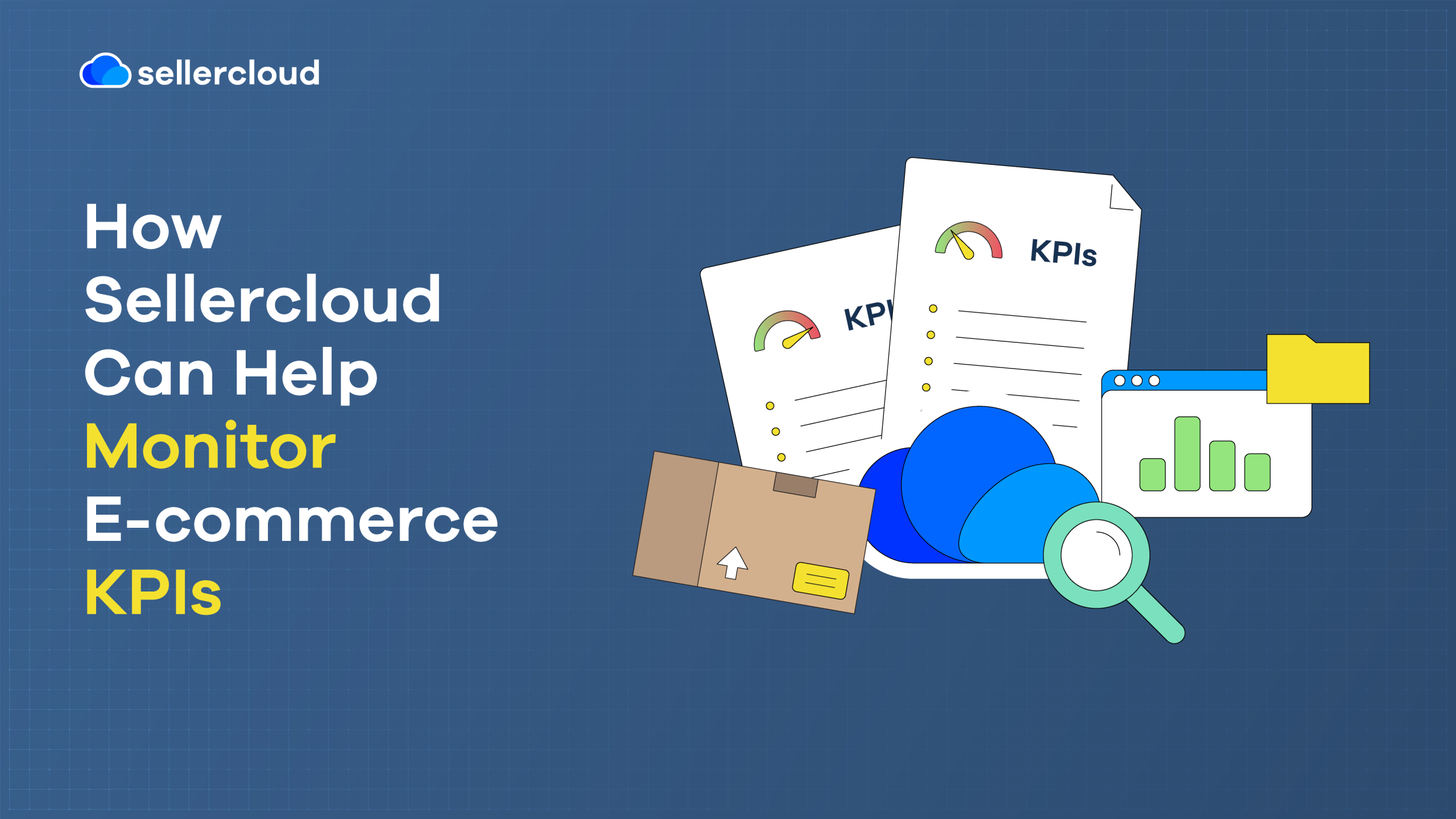
Descartes Sellercloud’s reporting features can assist ecommerce merchants with reporting on every part of their business. Descartes Sellercloud is a centralized location where you can access all your data regarding sales, commissions, shipping fees, and more.
You can track delivery status, returns, and refunds. Review shipping costs and calculate the average cost per product and even sales performance across the different marketplaces you sell. But you don’t just have to stick to Descartes Sellercloud’s pre-made reports. You can also create custom reports that work precisely for your business needs.
Schedule a Descartes Sellercloud demo today.
Key Points
If you remember anything about ecommerce KPIs, make it these key points.
- KPI stands for ‘Key Performance Indicator.’ KPIs measure the performance and progress of tasks, projects, and companies, to name a few.
- Ecommerce KPIs help businesses establish an acceptable performance level, remain competitive, identify problems, and strategize how to solve them.
- Ecommerce businesses can use various KPIs, and merchants must decide which are most useful.
- Ecommerce KPIs can be grouped based on their business area, such as order fulfillment, customer service, inventory management, and user experience.
- Merchants using Descartes Sellercloud can centralize their reporting and monitor the most important KPIs for their business.



